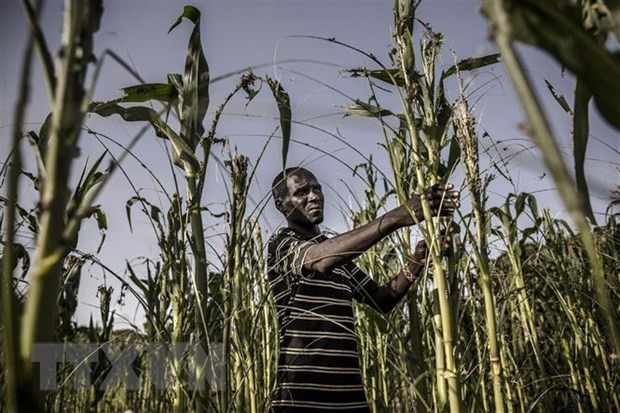According to the United Nations (UN), more than 20% of Africa's population, equivalent to 278 million people, is facing hunger. In the Sahel region alone, about 18.6 million people live in severe food insecurity, an increase of more than 5.6 million people compared to the figure released in June 2022. UN Secretary-General Antonio Guterres said the countries most affected were Burkina Faso, Niger and Nigeria.
Meanwhile, the UN’s World Food Program (WFP) also warned that the humanitarian crisis in the Horn of Africa has become increasingly difficult to control. Malnutrition has continued to spread. An estimated 5.1 million children in Ethiopia, Kenya and Somalia are severely malnourished, leading to unpredictable consequences for their development and well-being.
Experts said the main causes of food insecurity in Africa, were that the wounds caused by the COVID-19 pandemic have not been healed, while the conflict in Ukraine has pushed up the prices of energy and grain for some time. Agricultural expert at the Economic Community of West African States (ECOWAS) Bio Goura Soulé said, that after hitting a record high in March 2022, world food prices fell at the end of 2022, after Ukraine resumed grain exports through the Black Sea.
As a result, Africa has avoided the scenario of falling into widespread starvation. However, the continuous increase in fertilizer prices may still affect agricultural production in 2023. According to Soulé, the food shortage in Africa is not likely to subside soon, especially when most countries that need food support are located in this region.
Climate change is also one of the reasons that make the picture of food security in Africa darker. The WFP has recently warned that, after five consecutive seasons of recording below-average rainfall, the scale of the humanitarian crisis in the Horn of Africa has been increasing. Worryingly, the rainfall from March to May 2023, is also forecast below average.
In addition, the prolonged conflict situation has limited the activities of humanitarian organisations. The UN Office for West Africa and the Sahel said instability continued to increase in the majority of West Africa and the Sahel, despite the efforts from national security forces and international partners.
From mid-2021 until now, the WFP has more than doubled the number of relief deliveries in drought-affected areas throughout the Horn of Africa, from 4 million to more than 8.8 million people receiving food each month. However, humanitarian demand has continued to outstrip relief capacity. The WFP stressed that it will take many years for Africa to fully recover from the recent food security shocks.
According to experts, Africa has great potential to produce grain for itself. However, Senegalese President Macky Sall said that the continent is facing a paradox when most of the food consumed here is imported, while 65% of the arable land is abandoned.
At the recent Africa Food Summit in Senegal, the development partners pledged 30 billion USD to help the continent strengthen its production capacity and overcome the current crisis. The UN Secretary-General affirmed that transforming the food system is core to reducing poverty, encouraging sustainable development and creating jobs in Africa.
















